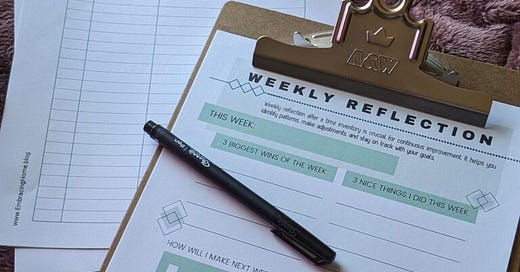Time Inventory for Moms & Homemakers
Finding balance in the chaos of daily life and overwhelm.
I have found that I am resistant to change unless I have pain in my life or data to show me that I need to make a radical adjustment. That is why I love using a Time Inventory. When I am feeling some friction in my schedule, or in my expectations of myself, or my children, I know I need to make a change.
A while ago I decided that the answer is NOT:
becoming superhuman and trying to fit more into my already busy day
getting up early and stealing hours of sleep (eww.. no thanks!)
it’s not yelling or becoming impossible to live with
(because of anger and feeling like a failure)
However, I often do not know what change to make. What would be the most effective? The answer often rests in realizing how much time my tasks take.
I need to find those sneaky time-wasters that hide invisibly in my day.
So here is the tool that I use:
My Time Inventory – Why?
By tracking how you spend your time each day, you’ll gain valuable insights and discover hidden gems. It allows you to find moments for self-care and rejuvenation, ensuring you have the energy to tackle daily challenges. It empowers you to make positive changes, freeing up precious moments for what truly matters—your family, passions, and personal growth. Also, a time inventory helps you set realistic goals, boosting productivity while maintaining a healthy work-life balance. It is a simple proactive step.
Why do we avoid this tool?
You might be hesitant to do a time inventory due to a few reasons:
Feeling overwhelmed with responsibilities and thinking tracking time will add more stress.
Worried about discovering time-wasting habits and facing potential inefficiencies.
Resisting change and finding it tough to adjust routines or habits.
Preferring spontaneity and not wanting a structured time inventory.
Feeling uncomfortable with self-reflection or scrutinizing daily activities.
Remember, it’s all about what feels right for you and your unique situation! If any of these reasons jump out at you, spend some time journaling.
What are you concerned about?
What do you think you will discover if you do this process?
I’m assuming that if you are still here reading this you want to get the massive benefits of this tool. Awesome! I am so glad you are here! Keep reading and be sure to download the free printable below. ⬇️
Let’s do this!
My Time Inventory – How?
Here are detailed steps to effectively log your time in a Time Inventory:
Choose a Time Frame: It could be a day, a week, two weeks…
Select a Logging Method: Decide on the method. Choose something that’s easily accessible and convenient for you: a physical notebook, a spreadsheet, a time-tracking app, or even a journal.
Start Logging Activities: Record everything you do each day, from chores to hobbies:
Date & Time: Note the approximate time for each activity.
Activity Description: What all did you do?
Be Specific: Describe activities in detail, like “cooking dinner”. For example, instead of writing “housework,” specify whether it’s washing dishes, doing laundry, or vacuuming. (or gathering random dirty clothes)
Include Everything: Log all activities, no matter how big or small. Include childcare, household chores, work-related tasks, personal time, social interactions, and leisure activities.
Note Time Breaks: If you take short breaks throughout the day, include them in your log. It helps you see how you use small pockets of time.
Log Time Immediately and Be Consistent: Try to log activities as close to their completion as possible. This reduces the chances of forgetting or inaccurately recording the time spent. Avoid skipping days, as it can create gaps in your data.
Remember – you are the only one who will see this. Be honest. It is for the benefit of future you and it will help in the next step: Reflection.
The Reflection Process:
The reflection process is my favorite part. I am not really a fan of stopping a million times a day to write out honestly what I have been doing for the past half hour…. but, the data is needed for this next step.
When I have taken time for reflection, I found these awesome benefits:
I discovered patterns and what mattered most: I took a peek at my daily activities, spotted any trends or patterns, and figured out which activities truly mattered and resonated with my heart as a stay-at-home mom.
I found time for fun and cut time wasters: I identified opportunities to add more fun and self-care into my days. I also pinpointed any time-wasting activities that I could let go of or optimize.
I made realistic goals: Now that I knew what needed adjusting, I set some reasonable expectations for myself!
You’ve got this! Be kind to yourself and create doable steps to spend time on what truly brings you joy and fulfillment.
Understanding your time usage can reduce stress and create space for self-care. This will make it easier to handle all your responsibilities and be your best self in every role you have. This broken world needs more moms, homemakers, and leaders who live intentionally. I hope that something here has helped you do that.
💙📝I am cheering for you! – April
Photo credits: Bookblock & freestocks on Unsplash
![April Edwards [Embracing Home]](https://substackcdn.com/image/fetch/$s_!LQC-!,w_80,h_80,c_fill,f_auto,q_auto:good,fl_progressive:steep,g_auto/https%3A%2F%2Fsubstack-post-media.s3.amazonaws.com%2Fpublic%2Fimages%2F35117ace-74f5-4db4-b7ac-543a660db102_1280x1280.png)
![April Edwards [Embracing Home]](https://substackcdn.com/image/fetch/$s_!e_Hp!,e_trim:10:white/e_trim:10:transparent/h_72,c_limit,f_auto,q_auto:good,fl_progressive:steep/https%3A%2F%2Fsubstack-post-media.s3.amazonaws.com%2Fpublic%2Fimages%2F8316051e-2315-4b00-bb18-b1ad0cb8d09f_1344x256.png)

![April Edwards [Embracing Home]](https://substackcdn.com/image/fetch/$s_!LQC-!,w_36,h_36,c_fill,f_auto,q_auto:good,fl_progressive:steep,g_auto/https%3A%2F%2Fsubstack-post-media.s3.amazonaws.com%2Fpublic%2Fimages%2F35117ace-74f5-4db4-b7ac-543a660db102_1280x1280.png)



I am afraid it will confirm my worst thoughts about myself. But I already think them, so that’s a bit silly. And maybe that it will take away my excuses for not getting more done.